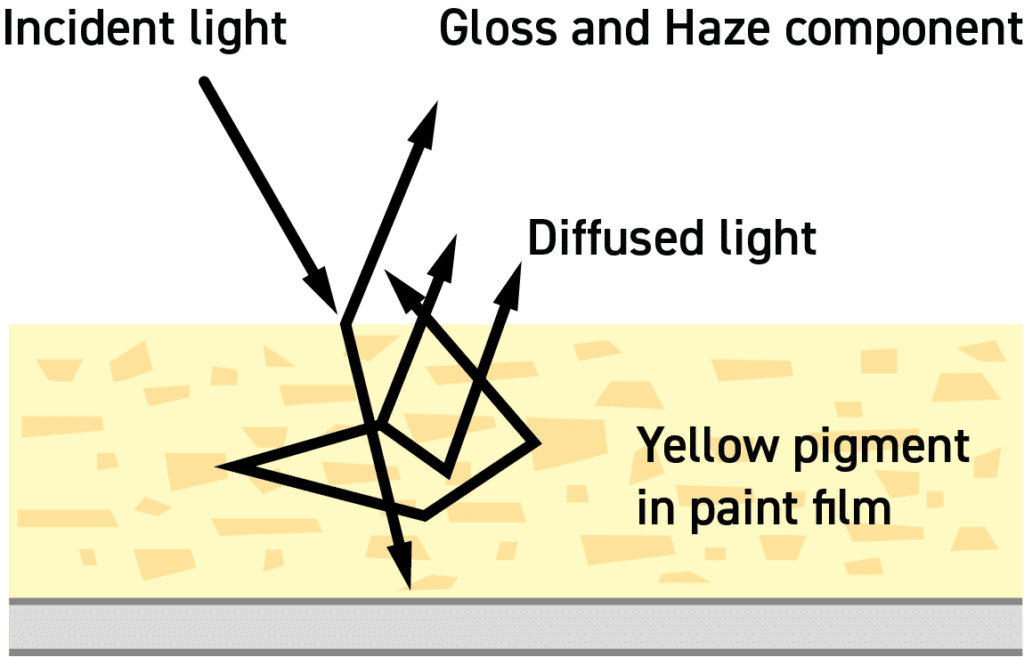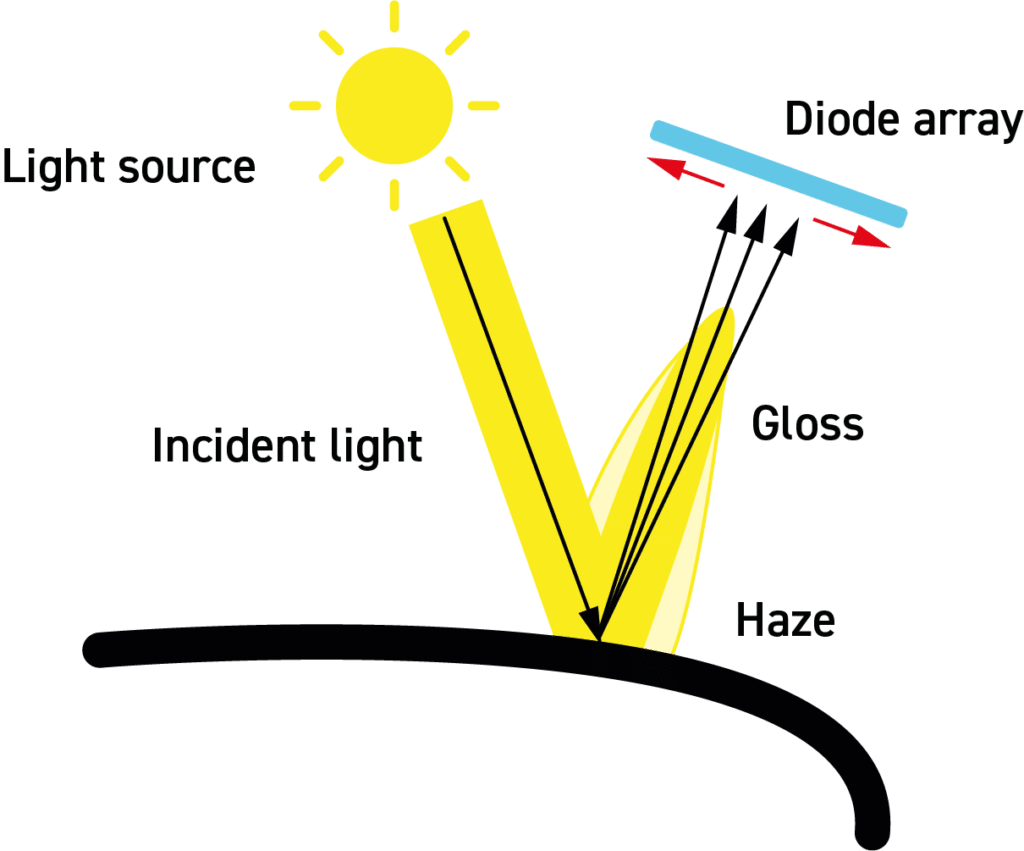Appearance & Measurement Experts since 1986
Reflection haze meters are traditionally used to measure reflection haze and use a standard glossmeter design with additional detectors 2º on either side of the specular angle to measure the haze component.
As the Rhopoint IQ incorporates an LDA, a 512 element, linear, photo-diode array (LDA) at the 20° angle instead of a single detector enabling measurement of the distribution of reflected light. haze measurement is easily accomplished using the reflected light data 2º on either side of the specular angle. The instrument can display the natural haze value (HU) or LogHaze value (HULOG).
Haze compensation is also required to correct variations when measuring different surface colours.
As reflection haze is caused by micro-textures on a surface, a small amount of light is reflected adjacent to the gloss angle. White surfaces, bright colours and metallics also produce a certain amount of diffuse light, reflected from within the material, to be present in this region. This diffuse light exaggerates the haze signal causing a higher than expected reading.

An advantage of the IQ is that, unlike a conventional instrument, compensation is calculated using a region adjacent to the haze angle. This technique gives compatible readings on solid colours but also compensates for directional reflection from metallic coatings and speciality pigments.
